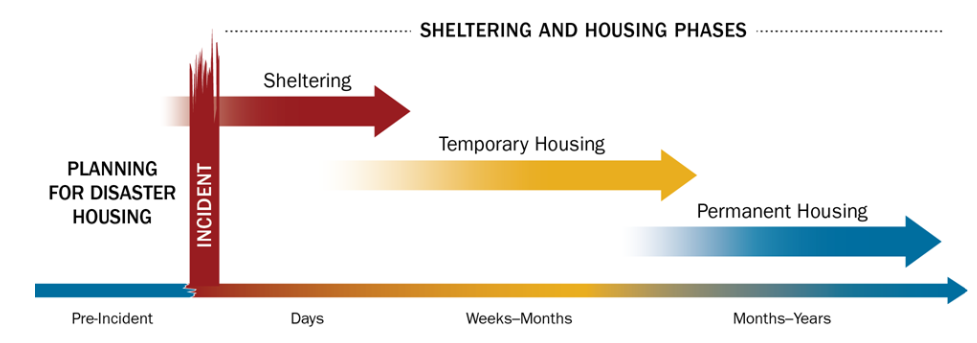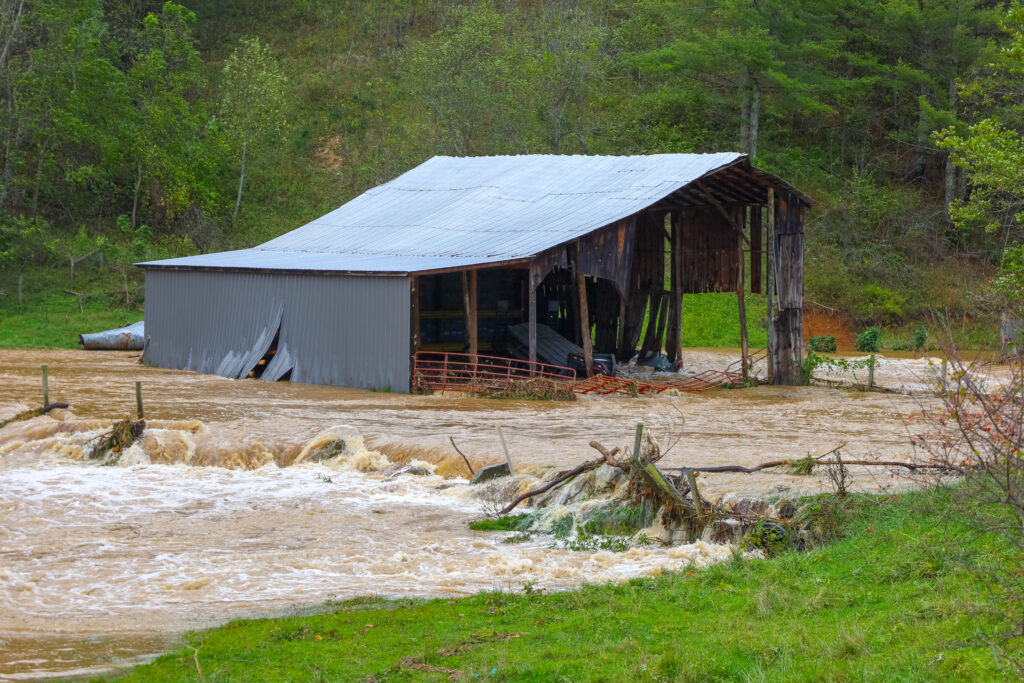The FWD #217 • 1,090 Words
When disaster strikes, a cascade of bureaucratic processes ensures survivors are housed— most of the time.
Natural disasters can strike with devastating force, leaving communities in ruins and families without homes. In the wake of Hurricane Helene’s catastrophic damage and with Hurricane Milton looming over Florida, the Federal Emergency Management Agency (FEMA) steps in, working alongside other disaster recovery agencies to address one of the most pressing needs: housing. How do these organizations support housing needs in the aftermath of major natural disasters?
The first 72 hours: emergency declarations and shelters
Before any aid can be administered, FEMA requires a state of emergency declaration to activate its legal authority and unlock federal funding. This declaration signals that local and state governments require federal intervention and helps define the scope of disaster.
In the immediate aftermath of a disaster, FEMA’s primary focus is on life-saving and life-sustaining operations. For those displaced from their homes, emergency shelters become a lifeline. These shelters, often set up in schools, community centers, arenas, or other large facilities, provide a safe space for individuals and families to weather the initial shock of displacement.

FEMA coordinates with local governments and organizations to establish and manage these shelters. While not a long-term solution, they are a crucial stopgap, providing basic necessities like food, water, and a place to sleep.
The weeks after: transitional housing
As the proverbial (and literal) dust settles, FEMA begins to implement more stable albeit still temporary housing solutions. One key program is Transitional Sheltering Assistance (TSA).
This initiative allows eligible survivors to stay in participating hotels or motels for a limited time, with FEMA covering the costs. TSA serves as a bridge between emergency shelters and more permanent housing arrangements. It gives families a semblance of privacy and normalcy while they work on their long-term recovery plans.
For many survivors, returning home isn’t immediately possible due to damage or destruction. FEMA’s rental assistance program steps in to help. This financial aid helps eligible individuals and families rent temporary housing while their homes are being repaired or rebuilt, and can also include lodging expense reimbursement.
The amount of assistance is based on local fair market rent prices and can be used for apartments, houses, or even recreational vehicles that can serve as temporary housing. This program typically lasts for up to 18 months, giving families time to get back on their feet.
The first year: home repair and relocation
As weeks turn into months, FEMA’s focus shifts to long-term recovery. The agency’s Individuals and Households Program (IHP) provides both financial and direct housing assistance options.
Direct housing assistance, available in select disasters, can include multi-family lease and repair, transportable temporary housing units, direct lease, and permanent housing construction. However, it’s important to note that FEMA assistance is not designed to restore homes to their pre-disaster condition, but rather to make them safe, sanitary, and functional.
To qualify, applicants generally must be U.S. citizens or qualified non-citizens, pass FEMA’s identity and occupancy verification, prove ownership for certain types of assistance, have a primary residence in a Presidentially declared disaster area that is inaccessible or uninhabitable, and either have no insurance or insufficient coverage for their losses.
FEMA works closely with state and local governments to develop and implement short and long-term recovery strategies. Here in Virginia, that includes our Department of Housing and Community Development, our State Office for USDA Rural Development, and nonprofits like the United Way and American Red Cross.
A more extensive list of individual state resources and referrals can be found on FEMA’s website.
When FEMA falls short
Despite the best efforts of FEMA and other agencies, disaster recovery faces significant challenges. Funding constraints can limit the scope and duration of assistance. Bureaucratic processes, while necessary for accountability, can slow down the delivery of aid or prevent help reaching the most vulnerable people. For example, people with disabilities in rural locations frequently reside in substandard housing and their housing requirements are not sufficiently met by government rehabilitation programs.
Sometimes the extent of the harm may be severe on a local level but not enough to warrant federal assistance, depriving communities of the most substantial aid source. This was the case recently in Southwest Virginia, where floods ripped through parts of Buchanan and Tazewell counties in the summers of 2021 and 2022.
At first, FEMA swiftly authorized aid to help rebuild local infrastructure. However, despite more than 100 damaged or destroyed homes, FEMA twice turned down requests for financial assistance to help private homeowners. The state filed appeals that FEMA subsequently rejected, stating that the damage “was not of such severity and magnitude” to justify the aid.
Southwest Virginia’s rural communities seemingly lacked the high-end housing stock or population density necessary to meet FEMA’s enigmatic eligibility requirements. These relief denials prompted members of our congressional delegation to seek greater transparency in FEMA’s evaluation process, and led state lawmakers to identify non-federal funds to fill the gaps.
In 2022, the General Assembly allocated $11.4 million to a new flood relief program for the Hurley community, which bore the brunt of the 2021 storms. A year later, lawmakers set aside another $18 million for the Bandy and Whitewood communities hit by the 2022 floods.
For homeowners whose properties sustained major damage or a complete loss, relief payments could total up to 175% of their home’s value, less any previous assistance. DHCD administers these programs in partnership with local authorities.
This one-time funding for property owners affected by the Southwest Virginia floods is the only dedicated resource created by the state to supplement direct aid from FEMA— no permanent offerings exist. However, recognizing the need to reduce flood risks and encourage preparedness, the General Assembly established the Virginia Community Flood Preparedness Fund during the 2020 session. Across four funding rounds, the CFPF has awarded more than $150 million to local communities for both planning activities and actual infrastructure work.
Adapting with the world
Recent policy reforms by the Biden-Harris administration have attempted to expand the assistance individuals can access through streamlined processes and more flexible funding. As disasters become more commonplace due to climate change, continued attention to emergency response programs and their shortfalls can ensure no one is left behind.
After a disaster, the path to recovery can be long and challenging. But with the combined efforts of federal agencies, local governments, community organizations, and resilient individuals, communities can and do rebuild, one home at a time.
